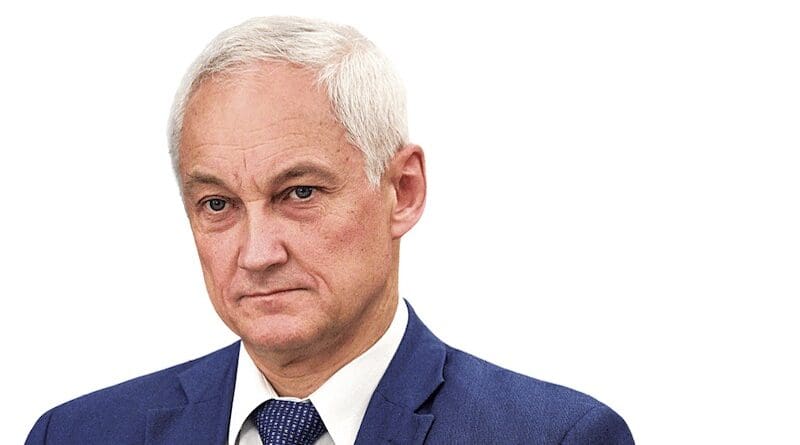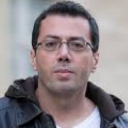
With Shake-Up, Putin Seeks The Upper Hand In Russia’s Long, Costly War On Ukraine – Analysis
By RFE RL
By Robert Coalson
(RFE/RL) — Russian President Vladimir Putin has launched his fifth term with a rare shake-up of the government that analysts say is driven by the need to manage a long and increasingly costly war of aggression against Ukraine and the fallout from Moscow’s mounting confrontation with the West.
Putin on May 12 removed Defense Minister Sergei Shoigu – long seen as one of Putin’s closest confidants and mentioned periodically as a possible presidential successor — and replaced him with acting First Deputy Prime Minister Andrei Belousov, a 65-year-old economist who formerly served as economic development minster and who aligns closely with Putin’s statist, centralizing impulses.
By moving the man who has been overseeing the entire economic bloc of ministers in the cabinet into the Defense Ministry, Putin is signaling the primacy of the war against Ukraine and his growing efforts to challenge the West among the tasks now facing the government.
It’s a message that Putin has delivered in numerous speeches since he launched the full-scale invasion of Ukraine in February 2022, and in recent months in particular.
“The proposal to name one of the key Kremlin-insider economists and the main statist in the economic bloc to the Defense Ministry could mean that Putin intends to win the war in the factories of the military-industrial complex and on international markets. This is logical, since the economic bloc has, overall, been more effective during the war than the security bloc,” Aleksandr Baunov, an analyst at the Carnegie Endowment for International Peace, wrote on Telegram.
“The strategy for victory will not be through mobilizations and military breakthroughs, but by applying slow pressure on Ukraine through the superior power of Russia’s military-industrial complex and the economy as a whole, which will apparently be pushed to work more effectively both on the front and in the rear,” he added.
Kirill Martynov, editor in chief of Novaya Gazeta Europe, said Belousov’s appointment meant that Putin intends to put the economy on a military footing — even more than it already is.
“The main idea that Belousov represents is economic mobilization in the service of Putin’s aims,” Martynov told Current Time, the Russian-language network run by RFE/RL in cooperation with VOA.
‘100 Percent’ Putin’s Man
Far-right nationalist-imperialist ideologue Aleksandr Dugin praised Putin for the move, calling it “a decisive step toward a government of victory” in a post on Telegram. Many nationalists who avidly support the war against Ukraine have harshly criticized Shoigu for the way it has been conducted.
Belousov has been a fixture among Russia’s top economic managers for years, including a stint as Putin’s main economic adviser in 2013-20. Through the 2000s, he was seen as something of a foil to relatively liberal Finance Minister Aleksei Kudrin, opposing many of Kudrin’s privatization initiatives and leading the effort to divert much of the profits from oil and gas exports back into state coffers.
A government source told the media outlet The Bell in 2018 that Belousov was the only economist in the Russian government who supported the 2014 takeover of Ukraine’s Crimea region. The source described Belousov as a “committed statist” who believes Russia is surrounded by “a ring of enemies.”
In recent years, he has overseen the national project on “unmanned aircraft systems,” which has spearheaded boosting Russia’s production of military drones.
Kremlin spokesman Dmitry Peskov on May 12 explained Belousov’s appointment as defense minister by saying his main task would be “to integrate the economics of the security bloc into the economy of the country.” Peskov noted that Russia’s budget was becoming similar to that of the Soviet Union in the 1980s, when spending on the military and security agencies was 7.4 percent of GDP.
Aleksandra Prokopenko, a former Russian central bank analyst and now a fellow at the Carnegie Russia Eurasia Center, wrote on X, formerly Twitter, that Belousov is “well-versed in military-industrial complex matters” and “holds Orthodox Christian beliefs.” She added that he was “100 percent” Putin’s man.
“Putin is aware that this war is not likely going anywhere anytime soon,” Mark Galeotti, a Russian political and security analyst, told RFE/RL. “As he digs in for the long term — and we see this in his rhetoric, but also we’re now seeing it within the government apparatus — from his point of view, this is a war that is going to be won to a large extent on industrial production. And this is why Belousov comes in.”
Belousov’s job will be “to put the Russian economy on a war footing and to transform Russia into a country in which the military economy drives everything else,” political analyst Ivan Preobrazhensky told RFE/RL’s Russian Service.
‘Monstrously Unpopular’
Belousov’s appointment came as a surprise, but analysts have speculated that the position of Shoigu, 66, had been growing weaker ever since the Russian military failed in its attempt to secure a quick victory over Ukraine in the weeks following the February 2022 full-scale invasion.
He and General Valery Gerasimov, the 68-year-old chief of the General Staff, were the primary targets of discontent during a short-lived but dangerous mutiny by Wagner mercenary fighters headed by Yevgeny Prigozhin in June 2023. Shoigu suffered a further blow last month when a deputy, Timur Ivanov, was arrested on suspicion of corruption.
Putin named Shoigu to head the Security Council, replacing fellow Putin insider Nikolai Patrushev, whose new appointment has not been disclosed.
Shoigu is “monstrously unpopular with the troops” in Ukraine, Galeotti said.
“But, on the other hand, Shoigu is a friend, a personal friend of Putin, and Putin is strangely loyal to his own,” he added.
Shoigu’s reassignment and the appointment of a civilian economist as defense minister could mean that professional military officers will take increased control over the military side of the war on Ukraine. The moves could presage the removal of Gerasimov as well, Galeotti said.
“Gerasimov has proven to be a massively underperforming and unpopular chief of the General Staff,” he said. “He’s even more despised amongst his own men than Shoigu was…. I wouldn’t be surprised if we see a new chief of the General Staff.”
Many of the most militaristic and aggressive pro-war bloggers were elated by the developments, which they saw as a blow against corruption within the Defense Ministry and a promise of improved military effectiveness both in Ukraine and beyond.
“Finally there is a chance to wipe out the last reserve of the era of [former President Boris] Yeltsin and manage to create a military central plan on the eve of the big war with Western Europe,” blogger Dmitry Konanykhin wrote on Telegram.
Written by Robert Coalson with reporting by RFE/RL’s Russian Service and Current Time
File photo of Russia's Andrei Belousov. Photo Credit: Government.ru, Wikipedia Commons



